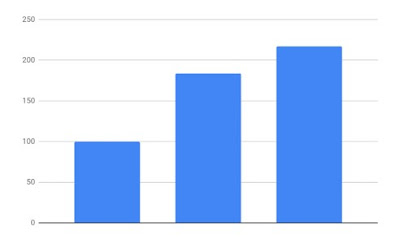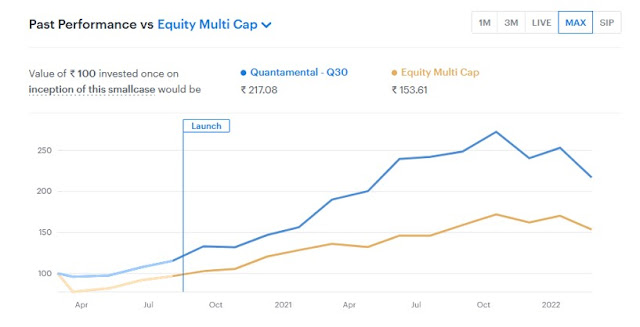Reading across disciplines is one of the best ways to improve our investment acumen. Here is a summary of some of the best articles I read this week. If you like this collection, consider forwarding it to someone who you think will appreciate it.
Shrinkflation is the answer to price inflation
Downsizing a product while keeping its price the same is sometimes called “shrinkflation”—a combination of the words shrink and inflation. Companies face higher prices for their supplies and may try to pass that onto the consumer. Downsizing a product reduces costs for manufacturers.
Shoppers tend to be price-sensitive but they may not notice subtle changes in packaging, or read the fine print on the size or weight of a product. The result is that consumers are less likely to notice getting less if the price is the same.
“Downsizing comes in waves, and it tends to happen during times of increased inflation,” said Edgar Dworsky, a consumer rights lawyer that keeps track of downsized products on consumerworld.org. “Bottom lines are being pinched and there’s three basic options: raise the price directly, take a little bit out of the product, or reformulate the product with cheaper ingredients.”
https://qz.com/2129426/inflation-and-supply-chain-snags-are-shrinking-your-products/
The five-day office workweek is dying
In the past few months, I’ve noticed that tech, media, and finance companies have basically stopped talking about their full return-to-office plans. And I’m not the only one. “I talk to hundreds of companies about remote work, and 95 percent of them now say they’re going hybrid, while the other 5 percent are going full remote,” Nick Bloom, an economics professor at Stanford University, told me. The exceptions to the rule, such as Goldman Sachs, are scarce.
“The number of person-days in the office is never going back to pre-pandemic average, ever,” Bloom told me. After two years of working from home, he said, employees don’t just prefer it. They also feel like they’re getting better at it. Despite widespread reports of burnout, self-reported productivity has increased steadily in the past year, according to his research.
According to Bloom’s research, the most popular model of hybrid work has employees in the office Tuesday through Thursday. “This model, with Friday through Monday out of office, is hugely attractive to new hires, and it’s become a key weapon for companies,” he said. “It’s not that everybody gets a four-day weekend, but rather it gives them flexibility to travel on Fridays and Mondays, while continuing to work.”
What the Remote-Work Revolution Means for Cities - The Atlantic
Be careful of vegan cheese
Vegan cheese is now ubiquitous, but few people seem to know what it's actually made of. They may seem synonymous with modern life, but meat and dairy-free alternatives have been around for centuries. Fermented tofu, which originated in China, for example, has been consumed for around 1,500 years.
Cheese has a unique structure that allows it to be solid at room temperature, and melt at a higher temperature. Some vegetable fats can do the same – coconut oil and palm oil, for example, which are both common ingredients in vegan cheeses. But animal cheese can also do something that is difficult to replicate using plant-based ingredients – stretch as it melts. What makes animal cheese go gooey and bubbly when grilled is a protein found in cow's milk called casein. So far, no one has found a vegan alternative.
Thankfully, vegan cheese-makers agree that dairy-free alternatives have become much more appetising over the last decade. This is largely thanks to one ingredient: cashew nuts.
And cashews aren't the only main ingredient used in vegan cheeses. Many companies use oils, like coconut oil, which is solid at room temperature and liquid at higher temperatures. One possible concern is that this is very high in saturated fat – coconut oil contains around 82% saturated fat compared to 63% in butter and only 39% of lard. However, vegan cheesemakers argue that people don't eat cheese, or vegan alternatives, for the health benefits.
https://www.bbc.com/future/article/20220317-what-is-vegan-cheese-actually-made-from
‘Tentacle Robot’ Powered By Magnets Can Delve Into Narrow Tubes Of Human Lungs
A robot that can reach some of the smallest bronchial tubes in the lungs using magnets to take tissue samples or deliver cancer therapy has been developed by University of Leeds researchers.
Doctors are limited in how they can move a bronchoscope, making it difficult to navigate the instrument and the catheter to where they are needed. The magnetic tentacle robot has been developed to be much more manoeuvrable and uses a robotic guidance system that is personalised for each procedure.
To reduce the size of the robot while retaining controllability of motion, the researchers manufactured it from a series of interlinked cylindrical segments, each 2mm in diameter and around 80mm in length. The segments were made of a soft elastomeric or rubber-like material which had been impregnated with tiny magnetic particles.
Because of the presence of the magnetic particles, the interlinked segments can move somewhat independently under the effect of an external magnetic field. The result is a magnetic tentacle robot which is highly flexible, able to shape shift and small enough to avoid snagging on anatomical structures in the lungs.
Fantasy games are getting addictive
Fuelled by smartphone adoption, cheap data, and easy digital payment methods, the online gaming industry in India is expected to nearly triple from $1.1 billion in 2019 to $2.8 billion by the end of 2022, according to Deloitte. In 2019, India saw its first fantasy gaming unicorn, the Tiger Global–backed Dream11; in 2021 Sequoia Capital–backed Mobile Premier League (MPL) became the second company in the sector to join the billion-dollar valuation club. A host of smaller fantasy gaming platforms — My11Circle, MyTeam11, Fan2Play, and 11 Wickets— have gained popularity in India in the last couple of years.
But the rise of these fantasy gaming apps has led to a spike in gaming and gambling addiction over the last few years, according to doctors at Delhi’s All India Institute of Medical Sciences (AIIMS) and Bengaluru’s Service for Healthy Use of Technology (SHUT). Much as in China and the U.S., the phenomenon is also spurring the rise of gaming addiction facilities to help individuals.
https://restofworld.org/2022/fantasy-sports-apps-are-driving-a-surge-in-gambling-addiction-in-india/












